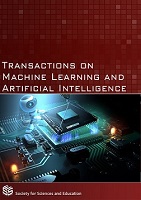Super-Quantum Correlations: How to Interpret the No-Signaling Condition?
DOI:
https://doi.org/10.14738/tmlai.103.12580Keywords:
Super-quantum correlations; no-signaling condition; Tsirelson boundAbstract
This article deals with the question of the maximal correlation degree of two intelligent machines that cannot exchange any signals. After reminding the reader of the incorrectness of the mainstream statistical interpretation of the “no-signaling” condition, its informational meaning is explored. It is emphasized that if Pawlowski et al.’s Information Causality Principle correctly expresses (and generalizes) the no-signaling condition, its application is, for now, based on a specific scenario (suggested by van Dam) and a no less specific (and simplified) relationship between mutual information and correlators. A more general informational interpretation of the no-signaling condition from which the Tsirelson bound can be derived is then formulated in terms of correlational independence.
Downloads
Published
How to Cite
Issue
Section
License
Copyright (c) 2022 Pierre UZAN

This work is licensed under a Creative Commons Attribution 4.0 International License.






